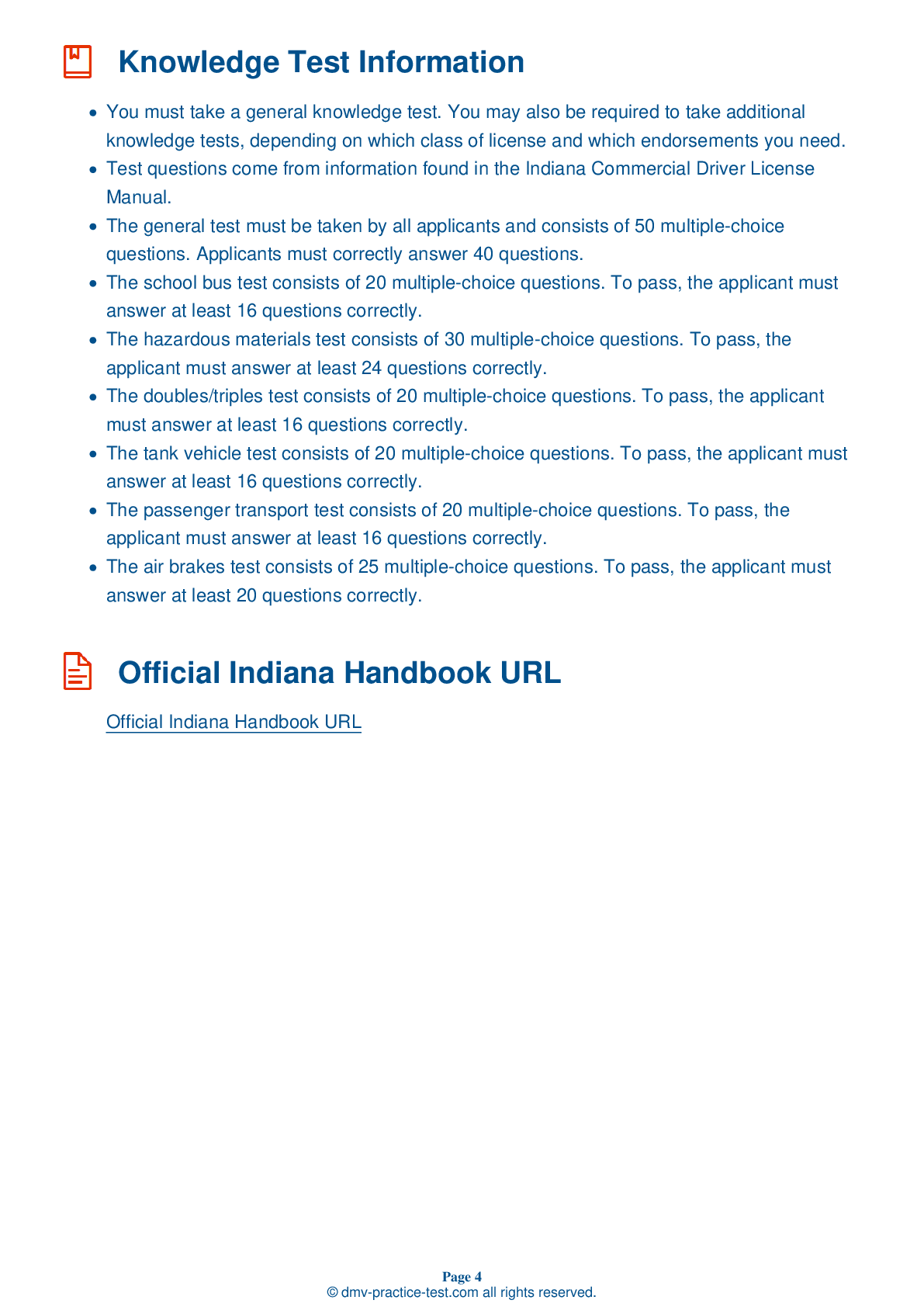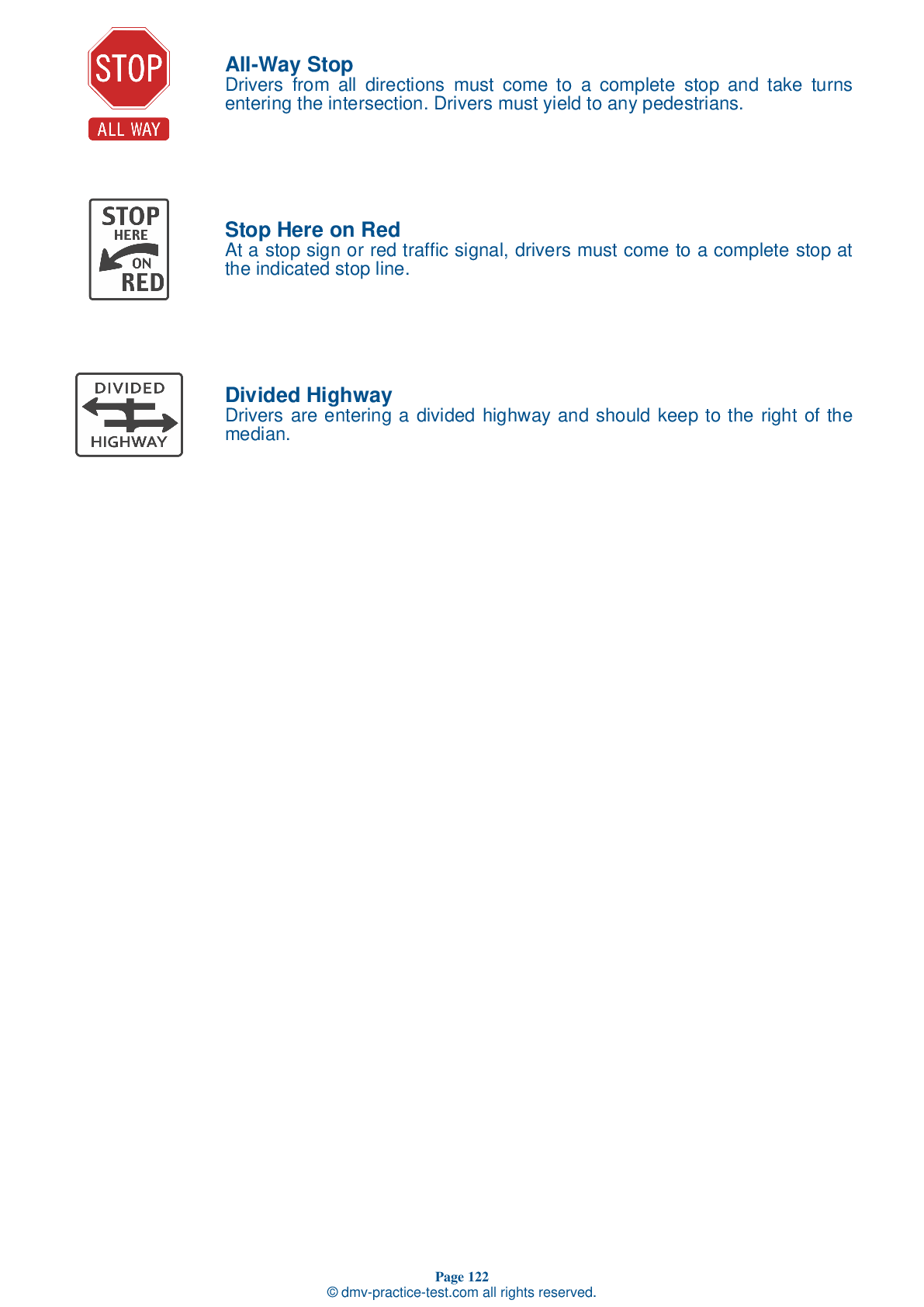Class B Driving Test | Indiana 2025 #1 Page 3 of 7
Train for FREE online with our Indiana class B license test. The official exam test consists of several obligatory parts, with all of them checking your knowledge of different blocks of road rules. If you need to obtain a IN CDL class B permit in 2025, practice as much as possible. Free sample tests published on our website will help you check and improve your knowledge and boost your grades. Please bear in mind that CDL class B requirements may vary from state to state.
15 . When braking while ABS is activated, you should:
In a vehicle equipped with an Anti-Lock Braking System (ABS), you should apply the brakes in the same manner that you would if you were driving without ABS.
16 . When asked to complete an offset back/right parking maneuver, you should:
If you are asked to complete an offset back/right parking maneuver, you should first pull straight forward, then back up to the right. Your vehicle must be parked completely within the boundaries of the parking space.
17 . Your horn should be used to:
Using your vehicle's horn is a way to tell other road users that you are nearby. However, because it could startle another driver and create danger, use your horn only when necessary.
18 . Tire chains:
Under some driving conditions, you may need to use tire chains to safely reach a stopping point. Always carry the right number of tire chains in your vehicle and verify that they will fit the drive tires.
19 . What should you do if your vehicle gets stuck on railroad tracks?
If your vehicle gets stuck on railroad tracks for any reason, you should immediately exit the vehicle and walk away from the tracks. Contact the proper emergency authorities.
20 . A driver can maintain alertness by:
To maintain alertness while driving, strategies include wearing sunglasses to reduce eye strain; maintaining a cool temperature inside the cab; avoiding heavy foods; and traveling with someone else who can share the responsibilities of driving.
21 . When being approached by a vehicle using bright headlights while driving at night, you can avoid being blinded by the headlights by:
To avoid being blinded by the lights of an oncoming vehicle at night, you can glance to the right edge of the road until the vehicle has passed.
See the exact questions that will be on the 2025 Indiana DMV exam.
99.2% of people who use the cheat sheet pass the FIRST TIME
Lillian MCcranie explains how our CDL study guide was helpful in passing the exam and recommends it to everyone.
Cameron tells us how he purchased the CDL exam, and found it to be a useful tool which helped him pass the exam and find a job.



